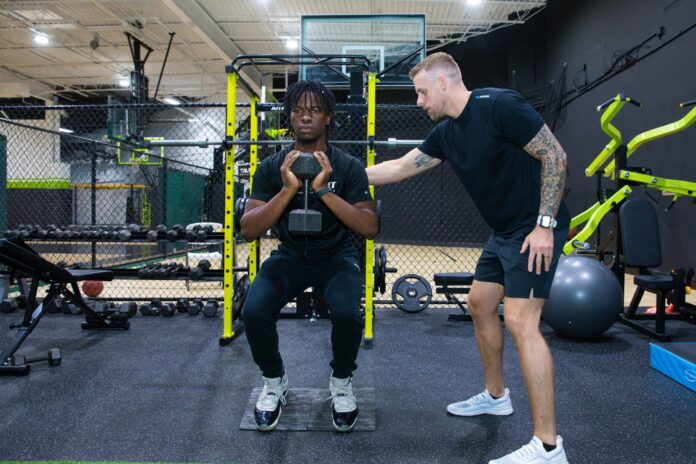Athletic activities, both professional and recreational, carry the risk of injuries such as sprains, strains, fractures, and ligament tears, which can keep athletes sidelined. A strategic approach to recovery is crucial, involving effective rehabilitation techniques that help athletes regain peak performance. This article explores common sports injuries, the importance of rehabilitation, various recovery methods, and the role of professionals in the rehabilitation process.
Introduction to Athletic Injuries
Engaging in sports activities places significant stress on the body, which can sometimes lead to injuries. These injuries can range from minor bruises and muscle strains to more severe conditions like torn ligaments or broken bones. Regardless of the severity, the goal is always to restore function and prevent future injuries through effective rehabilitation.
Common Types of Sports Injuries
Athletes are susceptible to a variety of injuries, the most common of which include:
Sprains and Strains
Sprains involve the overstretching or tearing of ligaments, while strains refer to similar injuries to muscles or tendons. These injuries are typically caused by overuse, improper technique, or sudden movements.
Fractures
Fractures are breaks in the bone and can occur from direct impact or stress over time. They often require immobilization and a comprehensive rehabilitation program to restore full function.
Tendinitis
Tendinitis is the inflammation of a tendon, often resulting from repetitive motion or overuse. It is particularly common in athletes who engage in activities requiring repetitive actions, such as tennis or running.
Ligament Tears
Ligament tears, such as the ACL tear in the knee, are severe injuries that often require surgical intervention followed by extensive rehabilitation.
The Importance of Rehabilitation
Rehabilitation is crucial for several reasons:
- Restoration of Function: The primary goal is to restore the injured part’s full function.
- Prevention of Re-Injury: Rehabilitation helps strengthen the injured area, reducing the risk of future injuries.
- Endurance and Performance: Proper rehabilitation ensures that athletes regain their endurance and performance levels.
- Psychological Recovery: Overcoming the mental hurdles associated with injuries is as important as physical recovery.
Effective Rehabilitation Techniques
Several rehabilitation techniques have proven effective in aiding athletes’ recovery:
Physical Therapy
Physical therapy is a cornerstone of rehabilitation, involving exercises and treatments tailored to the specific injury. Physical therapists guide athletes through strength, flexibility, and range-of-motion exercises to expedite recovery.
Chiropractic Care
Chiropractic care focuses on the alignment of the musculoskeletal system. Chiropractors, like those available in Lehi, can provide adjustments and manipulations to help alleviate pain, improve mobility, and enhance the body’s natural healing process. Chiropractic treatments are particularly beneficial for back, neck, and joint injuries.
Massage Therapy
Massage therapy helps reduce muscle tension, improve circulation, and promote relaxation. It is particularly effective in managing pain and accelerating the healing process for soft tissue injuries.
Hydrotherapy
Hydrotherapy involves the use of water in the rehabilitation process. The buoyancy of water reduces stress on the injured area, allowing for movement and exercise without the risk of further injury. Hydrotherapy is beneficial for joint injuries and post-surgical rehabilitation.
Electrical Stimulation
Electrical stimulation uses electrical currents to stimulate muscle contractions. This technique helps maintain muscle strength during periods of immobilization and can also aid in pain relief.
Strength and Conditioning Programs
Once the initial healing phase is complete, strength and conditioning programs help rebuild muscle strength and endurance. These programs are tailored to the specific needs of the athlete and the demands of their sport.
The Role of Professionals in Rehabilitation
The rehabilitation process often involves a multidisciplinary team of professionals, each playing a crucial role:
Physical Therapists
Physical therapists design and implement rehabilitation programs that include exercises and treatments to restore function and prevent re-injury.
Sports Medicine Physicians
Sports medicine physicians diagnose and manage sports-related injuries. They oversee the rehabilitation process, ensure the injury is healing properly, and provide medical interventions when necessary.
Athletic Trainers
Athletic trainers work closely with athletes to implement rehabilitation programs, monitor progress, and provide support during the recovery process.
Nutritionists
Nutritionists play a vital role in ensuring athletes receive the proper nutrients for healing and recovery. A balanced diet can significantly impact the speed and effectiveness of the rehabilitation process.
Conclusion
Effective rehabilitation techniques are crucial for athletes recovering from injuries. A multidisciplinary approach, including physical therapy, chiropractic care, massage therapy, hydrotherapy, and strength conditioning, helps athletes fully recover and return stronger. Skilled professionals play a key role in creating a tailored rehabilitation process, improving outcomes and minimizing future injury risks.

